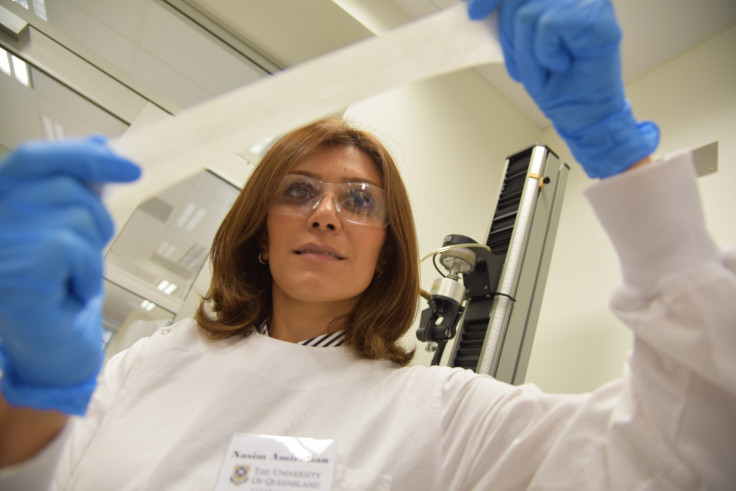Contraceptives Of The Future: Latex Condom Made With Spinifex Grass To Be As Thin As Human Hair

A condom that is made with grass and is as thin as human hair could potentially make safe sex the best sex.
Researchers led by professor Darren Martin at University of Queensland’s Australian Institute for Bioengineering and Nanotechnology extracted nanocellulose — a light, solid substance — from native spinifex grass and used it as an additive in latex. They found the spinifex nanocellulose significantly improved the physical properties of the latex. This “grass” condom is thinner, stronger, and more flexible than the standard.
To get the spinifex, the team worked in partnership with the Indjalandji-Dhidhanu People, the Aboriginal traditional owners of the Camooweal region in north-west Queensland. These indigenous communities make a variety of products from the grass, which has been traditionally used as an effective adhesive to attach spear heads to their wooden shafts.
Standard condoms from brands such as Kimono, Trojan, Lifestyles, Durex, and Crown have a latex thickness ranging from 0.049 millimeters to 0.121 millimeters. Martin hopes to eventually engineer the grass condom to be about 30 percent thinner while still meeting all condom industry standards.
The researchers tested their latex formula on a commercial dipping line in the United States and conducted a burst test that inflated the condoms and measured how much volume and pressure they could take. On average, the condoms got a performance increase of 20 percent in pressure and 40 percent in volume compared to the commercial latex control sample, according to the press release.
"The great thing about our nanocellulose is that it's a flexible nano-additive, so we can make a stronger and thinner membrane that is supple and flexible, which is the holy grail for natural rubber," said Martin, in the press release.
The use of nanotechnology for latex condom production could possibly lead to a drop in condom prices. Nanocellulose from spinifex grass would lead to less latex use, which means the material cost in production would drop. This would be a good for manufacturers and could eventually translate to lower condom costs.
The release of this condom could also make a difference in the fight against sexual-health related diseases. The ultra-thin material and budget- friendly option could further encourage condom use and prevent the spread of diseases such as HIV and AIDS. Condom use among adults tends to be scarce because it’s seen as less pleasurable, although sexually transmitted infections can affect anyone at any age.
A 2010 study found condom use declines with age, with adults over 40 having the strongest aversion to condoms. More than 90 percent of men over 50 reported not using a condom when they last had sex with a date or casual acquaintance, and 70 percent didn’t do so when they had sex with a stranger. Among women over 50, a majority also reported having sex without a condom.
The use of nanotechnology in condom production could make sex pleasurable for both him and her. In 2012, researchers from the University of Washington developed a versatile material that could simultaneously offer contraception and prevent HIV. The material is made from a liquid combination of polymers and drugs via electrospinning — spinning nanometer size fibers using an electric field.
This produced a very fine, stretchy, and dissolvable fabric that can be inserted into a woman's body to provide protection against pregnancy and sexually transmitted diseases. The two types of fabrics included one that provides quick contraception and then breaks down within minutes, and another that dissolves over a period of days, providing sustained drug delivery. The researchers suggest the different fibers could be combined with a variety of drugs to offer more protection.
Nanotechnology could potentially increase the use of condoms in the future.



























